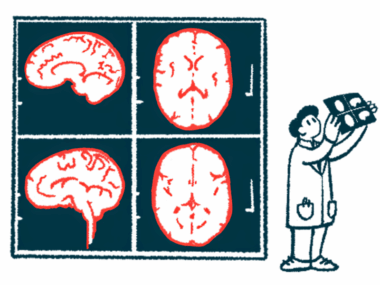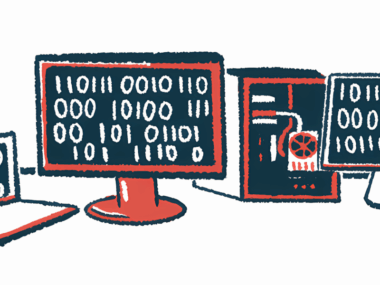AI tool has potential to better track MS lesions over time: Study
iQ-MS outperforms radiologist-based measures at quantifying lesion changes
Written by |

An artificial intelligence (AI) program, called iQ-MS, outperforms traditional radiologist-based measures at quantifying changes in lesions over time in people with multiple sclerosis (MS), a new study shows.
“iQ-MS is a sensitive and accurate tool for monitoring MRI scans in people with MS by providing quantitative metrics that value-add to traditional radiology reports,” researchers wrote.
The study, “A real-world clinical validation for AI-based MRI monitoring in multiple sclerosis,” was published in npj Digital Medicine. The work was led by scientists at Sydney Neuroimaging Analysis Centre, which makes the iQ-MS product.
MS is characterized by inflammation that damages nerve tissue in the brain and spinal cord. MS-related damage can be visualized on MRI scans as lesions, or areas where nerve tissue has become inflamed and scarred.
Tracking MS lesions critical part of patient care
Tracking MS lesions, and in particular looking for lesions that are new, getting bigger, or actively inflamed, is a critical part of care for MS and can help guide decisions about treatment.
Traditionally, MS lesions are measured by an expert radiologist looking at a scan, which comes with a risk of human error and biases. Also, radiologists often cannot detect brain atrophy (shrinkage), a validated measure of disease progression, by visually inspecting MRI scans alone.
IQ-MS is an AI program designed to quantify MS lesions and brain atrophy. In simple terms, the program was created by feeding a bunch of imaging scans into a computer, alongside a set of mathematical algorithms that allow the computer to “learn” from the data, identifying patterns to quantify lesion burden and brain volume.
Now, scientists put the iQ-MS system to the test, comparing the tool against measures taken by human experts.
The study involved MRI scans from 397 people with MS. For each individual, two scans were available from different points in time (typically about a year apart), so that changes in lesion load and brain volume over time could be compared.
Each of the scan pairs was analyzed independently by three methods: once based on clinical radiology reports provided at the patients’ care center, once by experts at a core MRI reading laboratory, and once by iQ-MS. When all three methods agreed, the results were taken as the ground truth. When there were discrepancies, a pair of experts reviewed the data manually to arrive at a consensus for a final ground truth situation.
Results showed the iQ-MS system accurately identified nearly all (93.3%) scans with new or enlarging lesions, a notably higher rate than the reports done at clinics (58.3%) or at the core MRI lab (85%). The iQ-MS system also outperformed the clinic and core lab at identifying newly inflamed lesions (85.7% vs. 57.1% and 71.4%, respectively).
“The fully automatic AI based tool substantially outperformed clinical radiology reports … and was at least equivalent to the core imaging laboratory,” the researchers wrote.
The AI tool was especially better than the human-based measurements at identifying existing lesions that have grown over time, which the researchers said is “perhaps not an unexpected finding” as differences in lesion size are often subtle and hard to see with human eyes.
Put another way, the iQ-MS system missed the equivalent of one new lesion for every 44 scans analyzed, whereas radiology reports missed one lesion out of every 15 scans, and the core lab missed one lesion out of every 19 scans. Across all three methods, most scans that didn’t have new lesions were accurately identified as such.
The iQ-MS tool also showed comparable accuracy to the core MRI lab at identifying changes in brain volume. The brain normally shrinks somewhat as a person gets older, but in people with MS the rate of brain shrinkage or atrophy is accelerated, and this has been shown previously to correlate with worse disability.
Analysis shows ‘superiority of the AI tool’ across lesion, volume measures
Brain atrophy measures taken by iQ-MS showed a slightly better correlation with disability scores than human-based measures of brain atrophy, the researchers noted.
“Comparison with both radiology reports and a core MRI analysis lab shows superiority of the AI tool across a range of lesion and volume measures derived from clinically acquired, multicentre scans,” the scientists concluded.
“The scaled deployment of AI-based quantitative imaging tools, such as iQ-MS, has the potential to enhance both real-world, clinical-imaging disease-specific research and the precision management of individual patients with MS,” they added.
While AI tools like iQ-MS may aid in clinical practice, these tools are limited in scope, the researchers noted. Unlike humans, they can’t incidentally notice findings that they haven’t been specifically designed to detect.
As such, “radiologist oversight, both for quality control of the results provided by the AI tool; and for reporting clinically significant incidental findings, remains paramount,” the researchers wrote.







